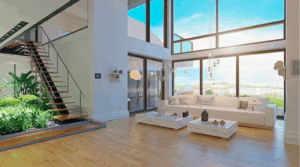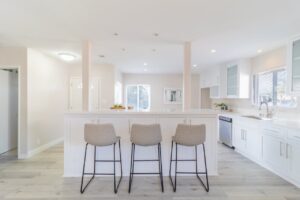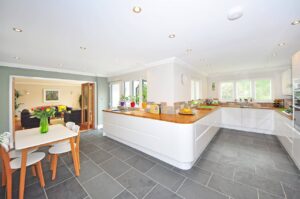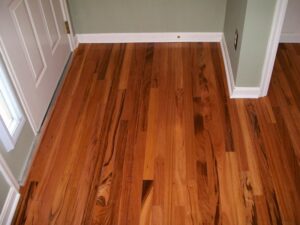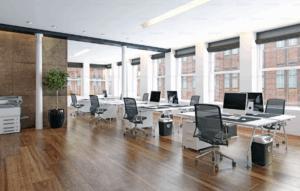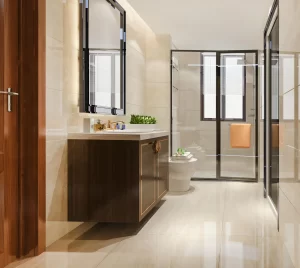How Dubai’s Heat Affects Floors
Flooring materials, like all building materials, respond to their environment. When exposed to high temperatures, they expand; when temperatures drop, they contract. This seasonal floor movement is particularly visible in wood, laminate, and vinyl, which tend to swell during summer and shrink during the cooler months. Even stone or tile, though more stable, can be affected by extreme temperature shifts.
Humidity adds another layer to the problem. While Dubai is known for its dry desert air, air conditioning systems can create sharp fluctuations in indoor humidity. Floors that absorb moisture expand even more, while those that dry out too quickly may shrink or crack. Over time, this back-and-forth cycle leaves visible marks: lifted edges, warped planks, cracked grout, or widening gaps.
Many homeowners assume something must be wrong with the flooring itself, but the truth is that the climate is the main culprit. Without accounting for these natural movements, even the highest-quality floors can fail prematurely.
Why Expansion Gaps and Acclimatization Matter
One of the most effective ways professionals manage floor movement is by leaving expansion gaps. These small, almost invisible spaces between the flooring and the wall give the material room to move without causing buckling. Without them, floors press against the walls or each other, creating pressure that eventually cracks or warps the surface.
Acclimatization is another step that makes a big difference. Before installation, flooring materials should sit inside the home for a few days to adjust to indoor temperature and humidity. This simple process helps the flooring “settle” into its environment so that after installation, the shifts caused by Dubai’s heat are less extreme. Skipping this step often leads to problems within months, even if the installation looks flawless at first.
Together, expansion gaps and acclimatization are small but essential practices that prevent climate floor damage and ensure flooring lasts longer in demanding conditions. For this reason, you should also focus on outdoor flooring maintenance in Dubai’s climate.
Choosing the Right Flooring for Extreme Weather
While all floors are affected by temperature, some materials are far better suited to Dubai’s climate than others. Tile, marble, and polished concrete are among the most stable options. They resist expansion and contraction, remain cool underfoot, and rarely show signs of seasonal stress. For this reason, many homeowners in Dubai rely on them for living rooms, kitchens, and high-traffic areas.
That doesn’t mean you have to give up the warmth and elegance of wood. Engineered wood, with its layered construction, handles Dubai’s heat more effectively than solid hardwood. It still provides the look and feel of natural wood but with added stability.
Luxury vinyl flooring in Dubai has also grown in popularity, thanks to their durability, realistic finishes, and temperature resistance. Some advanced options are even designed with coatings that reflect heat, making them an excellent fit for modern homes.
The key is to balance style and practicality. Choosing temperature-resistant floors that match your interior design doesn’t have to mean compromising. With today’s materials, you can achieve both durability and beauty.
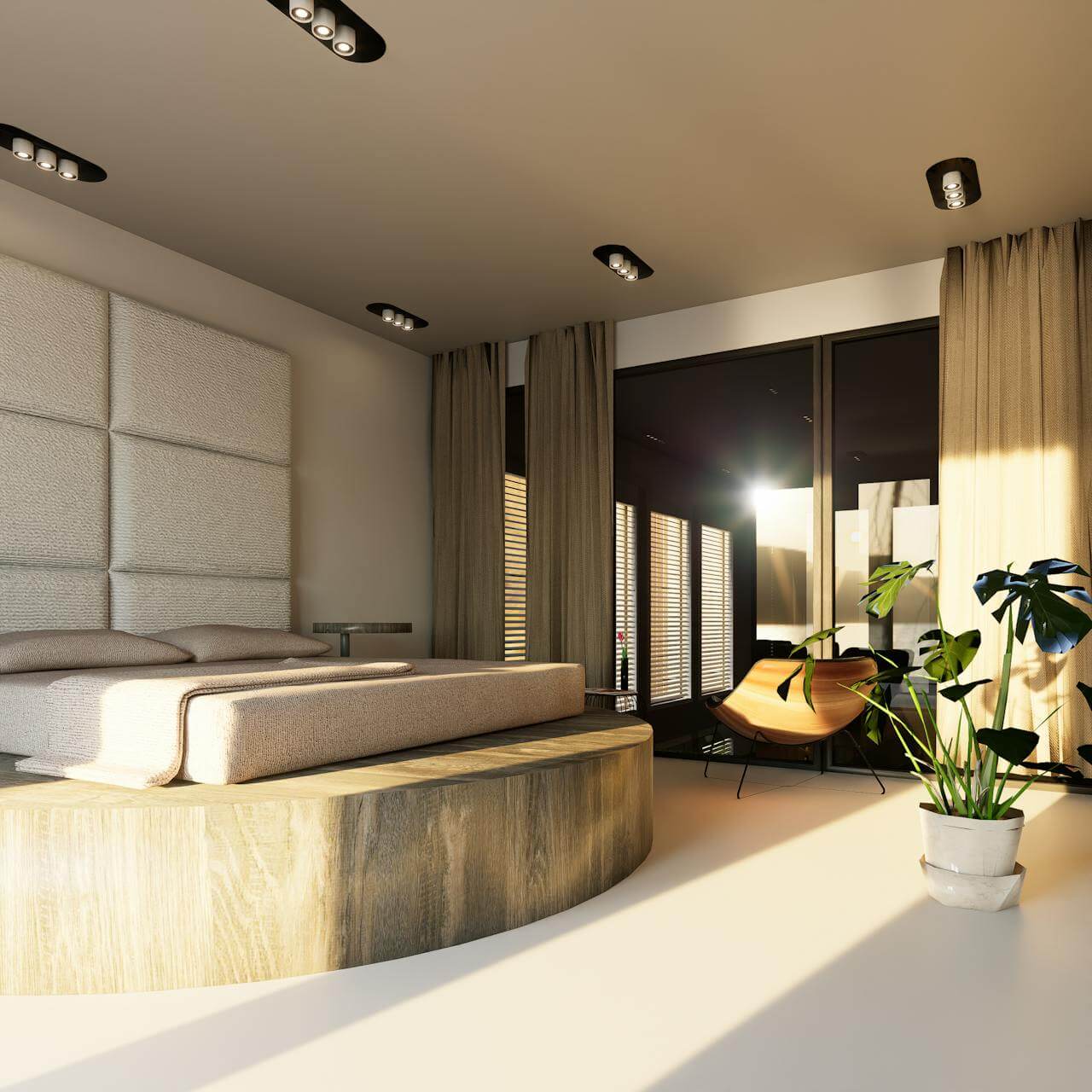
Spotting Early Signs and Preventing Damage
Homeowners often overlook the warning signs of flooring problems until it’s too late. A squeaky floorboard, a small gap, or a slight unevenness might not seem urgent, but they usually point to seasonal movement. Left unaddressed, these minor issues can grow into cracks, lifted planks, or even sections of flooring that need full replacement.
Preventing damage is often about simple habits. Keeping indoor temperatures steady helps reduce stress on floors. Curtains or blinds that block direct sunlight prevent hot spots where expansion is more intense. Regular inspections, especially in the first year after installation, make it easier to catch problems early. And when issues do appear, calling in professionals ensures they are fixed correctly, without creating new weak points.
Professional installation is equally important. Experienced installers in Dubai understand how to prepare flooring, account for seasonal floor movement, and recommend the right materials for each space. This expertise saves homeowners money and frustration in the long run.
The Hidden Costs of Ignoring Floor Movement
It’s easy to dismiss a squeak underfoot or a slight gap between planks as harmless, but these early signs of seasonal floor movement often lead to bigger problems. In Dubai, where heat accelerates wear and tear, ignoring small issues can quickly result in expensive repairs.
For example, when boards press against each other without room to expand, the pressure can cause edges to lift or crack. Once this happens, individual planks often need replacing, which is more costly than preventive adjustments.
Tiles are not immune either. Cracks in grout or surface lines that seem minor at first can spread with repeated exposure to heat. Replacing damaged tiles in a large area requires not just material costs but also labor-intensive work.
Even luxury vinyl or engineered wood, which are designed to handle Dubai’s climate better, can suffer from shortened lifespans if expansion problems aren’t addressed early. The true hidden cost isn’t just financial; it’s the inconvenience.
Having to replace sections of flooring disrupts daily life and takes away the enjoyment of a well-finished home. Taking action at the first sign of trouble, whether by consulting professionals or improving indoor conditions, helps avoid these unnecessary costs.
Indoor Design Choices That Reduce Heat Stress on Floors
Not all solutions to floor expansion and contraction require construction or renovation. Often, small design choices in your living space can ease the pressure on flooring. Direct sunlight, for instance, is one of the strongest triggers of expansion. Installing thick curtains, blinds, or UV-blocking window films can significantly reduce the heat absorbed by your floors during peak hours.
Rugs also play a useful role in protecting areas most exposed to temperature swings. In living rooms or near balconies, rugs help shield flooring from both sunlight and heavy use, reducing stress on the material underneath. Similarly, thoughtful furniture placement can help distribute weight evenly across the flooring, preventing localized pressure points where boards are more likely to shift or creak.
Even the choice of interior colors makes a difference. Lighter tones on walls and décor reflect sunlight, keeping rooms cooler and easing heat buildup on surfaces. Paired with steady air conditioning and good ventilation, these choices create a more stable indoor environment. While they may seem simple, design decisions like these extend the lifespan of temperature-resistant floors and reduce the risk of climate floor damage.
Conclusion
Floor expansion and contraction in Dubai’s heat is not something homeowners can ignore. It is a natural process, but with the right approach, it does not have to mean constant repairs or replacements. Understanding how climate affects floors, making smart material choices, and relying on proper installation techniques all reduce the risk of damage. Regular maintenance and early intervention keep floors strong and beautiful for years to come.
For the best flooring solutions in Dubai, contact Floor Guys today at +971 585498158. Our team offers expert installation and a wide selection of flooring options designed to withstand Dubai’s unique climate while enhancing the beauty of your home.
Frequently Asked Questions
How can I tell if my floor is being damaged by heat?
Creaks, gaps, or boards that feel uneven are common signs of floor expansion and contraction. These changes often appear during seasonal shifts and can lead to long-term climate floor damage if ignored.
Do engineered wood floors handle Dubai’s climate better than solid wood?
Yes. Engineered wood is more stable because of its layered structure, which makes it less vulnerable to seasonal floor movement. It provides the natural look of wood with greater resistance to the Dubai heat.
Is tile completely safe from floor expansion in Dubai's heat?
Tile is highly resistant but not completely immune. Without proper installation, including expansion joints in larger areas, tiles can still crack under extreme temperature changes.
How does acclimatization help flooring last longer?
Acclimatization allows flooring to adjust to a home’s indoor conditions before installation. This reduces the stress caused by sudden shifts in temperature or humidity and prevents early signs of warping or gaps.
Can air conditioning protect floors from expansion problems?
Air conditioning helps regulate indoor temperature and humidity, which reduces flooring stress. However, relying solely on AC is not enough—proper installation and temperature resistant floors are equally important.

